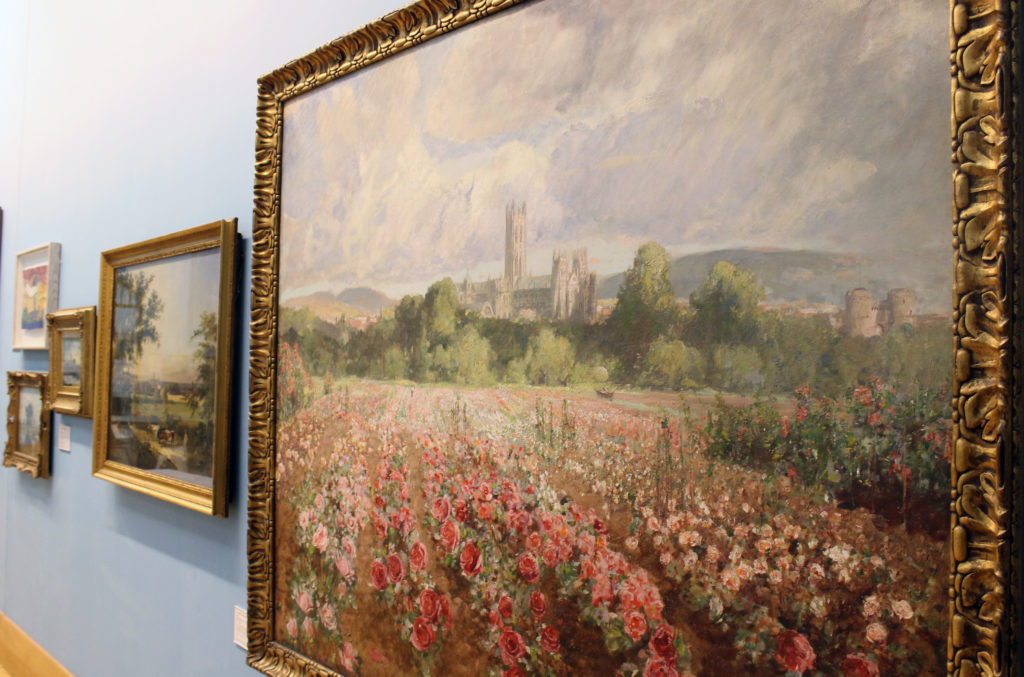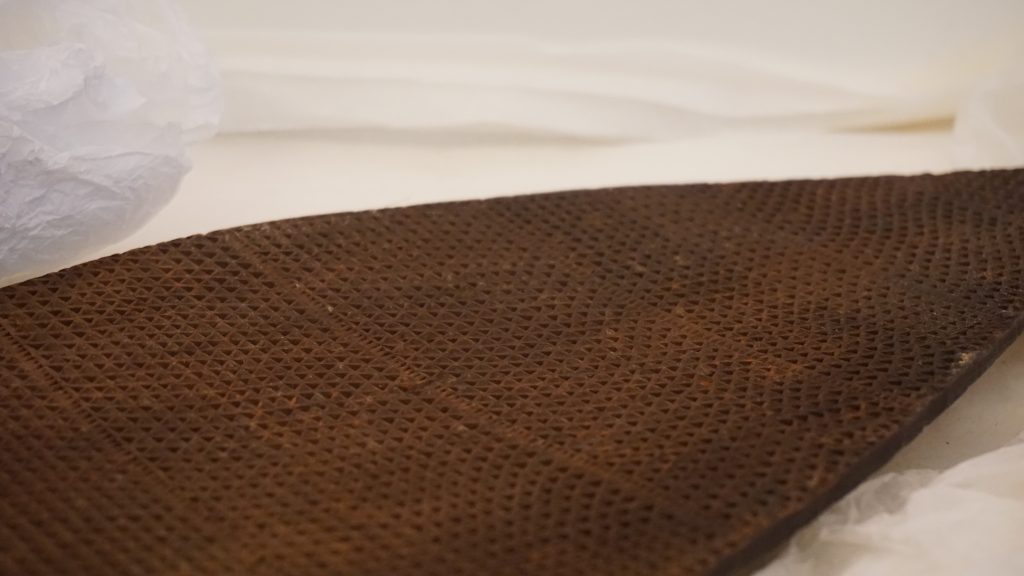
Easter fun at the museums!
Exhibitions, trails and activities; six fun things for all the family to enjoy at The Beaney and...
Having spent the first few weeks as Artist In Residence just sitting and looking in the different rooms, I decided to use the museums facility, which enables members of the public to handle objects within the collection.
In the room Explorers and Collectors I asked a member of staff if it would be possible to hold some objects. She kindly obliged and whilst I tentatively put on the obligatory white handling gloves she carefully brought out a shallow cardboard box. As the lid of the first box was lifted, inside cocooned in white tissue paper I could make out some small delicate Greek looking pots.
Gently removing the tissue paper I picked up one of the small vases. The surface was surprisingly smooth, the shape symmetrical and the decorative brush work depicting scenes of Greek Gods and Goddesses was again clean, quite loose but precise. The only imperfections being the chips and cracks gathered during its lifetime. One pot had a base which, when I looked at it closely seemed more crude and damaged than the rest of the pot. The base was a reproduction, its damage mimicking the chipped original vase. There was a fusion of the reproduction onto an original almost like a parasitic host.

Other objects were bought out, a paddle, which through the ravages of time had been disembodied from its handle. I first saw the handle section and was unsure at what I was looking at. As I picked it up I was taken by surprise, it was so light. I had been expecting it to be heavier; to the eye it looked like it was made from iron as it had a metal club type quality to it.
The member of staff explained that the paddle and Indian shield which was in another box awaiting to be inspected were thought to be decorative items for the tourist trade, items that had been reproduced for a specific market to replicate the original.
Inspecting the paddle and handle closer I could see every inch of it was beautifully carved in a tiny geometric repetitive pattern. The pattern was full of symmetry, there were slight imperfections and the uniformity was fractionally uneven.
Handling these objects, feeling their weight and running my fingers over their surface, drew me in. I was touching the marks made by the objects creator, whether this was around two thousand years ago or a few hundred years ago. I could feel the terrains created with the tools that had been available at the time. It has got me thinking about production, reproduction and imperfection.
